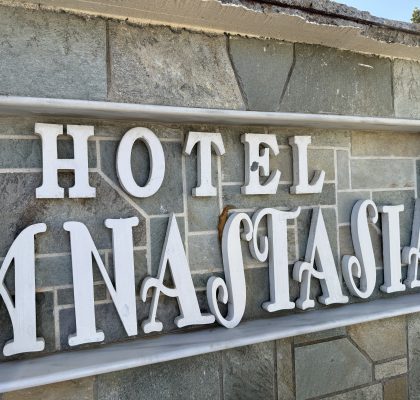- Mamaia Beach – a Mini Guide to the Best Vacation
- Visit a Prison: Sighet Memorial Inside a Communist Prison
- Skigyimes Alpine Coaster in Romania
- The Cultural Harbor / Port Cultural Cetate
- Bran Castle – Visiting Dracula’s Castle
- Balea Lake The Most Impressive Glacier Lake in Romania
- Turda Salt Mine An Underground Amusement Park
- Transfagarasan – A Unique Highway
- Corvin Castle – an Inspiration for Dracula
- The Iron Gates in Romania
- Clay Castle upon the Valley of the Fairies
- Experience Nature Bigar Waterfall
Planning to visit a prison may not be an ideal way to spend your vacation, but it can be a life-changing experience. Sighet Prison in Romania isn’t a joyful place, but it’s a perfect example of the communist era.
For many visitors, walking inside the prison is an unforgettable and moving experience. The prison is a physical reminder that torture, hard labor, and murder can be meted against human beings because of holding a difference of opinion from those in power.

Background of Sighet Prison
Sighet Prison is located in Sighetu Marmatiei town – quiet town with a dark history. It was home to the infamous jail where religious, political, and intellectual elites were imprisoned.
Built in 1897, it was meant to be for regular prison offenders that included peasants, students, and pupils. Repatriation of war prisoners during the Second World War was also done through the prison.
In 1948, things began to change with the consolidation of communist power in the area, with the prison reserved for the regime’s opponents. The prison was referred to as the Danube Colony, a unique work unit to hide their evil deeds. In reality, it was used to massacre the elite in the country and keep others locked up.
The opponents included academicians, journalists, military officers, priests, politicians, authors, professors, historians, and economists. The imprisonment of the elites was meant to discipline challengers and maintain order in the communist country.
Prisoners were confined under inhumane conditions, with no trial, and given harsh punishments. Many of these political opponents spend their last days within their prison walls, with their families not aware of their passing.
In 1977, Sighet Prison was closed and converted first into a salt warehouse, a broom factory, and a museum.
From Prison to Museum
Sighet Prison was a cruel place and has always been associated with bitterness. It was converted into “The Memorial of the Victims of Communism and of the Resistance”, a museum mainly visited for reminiscent purposes.
The Civic Academy Foundation now manages the memorial museum, which was once a feared jail in Romania. The reconstruction took four years, with the memorial officially opened in 1997 by Anna Blandiana, an acclaimed writer and president of the foundation.
The prison’s renovation into a museum included building a unique space named “Hall of Remembrance and Prayer”. Visitors who enter the hall are allowed to light candles of remembrance for the people killed within the prison walls.
When you step foot in the Museum, you will surely notice the walls are covered with portraits. Each portrait depicts a person who was imprisoned there. There are literally thousands of pictures glued on the walls.
The cells on each floor were preserved in their original state and included ten isolation cells plus four shared cells. The “Black Cell” is one of the most popular ones among those who visit the prison. The restoration of cells into rooms tells of the dictatorial system that came upon Romania in the communist era.
Bronze statues depicting the prison life in Sighet during the communist era also stand in the courtyard portraying prisoners’ anguish and pain. The museum is significant as it showcases the atrocities that took place at the prison, holds archives of testimonies by surviving prisoners and promotes justice on behalf of those affected.

Guide to the Sighet Memorial Prison
For many, the decision to visit a prison-like Sighet turned museum is usually informed by its dark history.
At the museum entrance, visitors are welcomed by the voice of Ana Blandiana. The welcome message includes a short presentation of the museum and the need to preserve the memory of victims that suffered or were killed during the communist era.
Below is a brief look at what you can expect as soon as you walk into the memorial museum.
Visiting the Jail: Ground Floor
Map Room: The room has a large map on display that pinpoints areas within the prison that were labor camps, detention centers, psychiatric asylums, and common graves. Visitors also get to see more maps and photos with more detailed information.
Sighet Prison: This room holds introductory information about the prison with details showing the museum’s layout and prison plans.
Collectivization Room: In this room are written documentation and photos of Romania pre and post collectivization. The documentation includes information on the revolt by peasants and the repression that took place to bring order.


Hard Labor Room: In this room is all the information about labor camps that prisoners were sent to work in. Visitors interact with information about the construction of the “Death Canal,” which is the canal that connects the Danube and the Black Sea.
Penitentiary Regime: The room, which was converted from an old kitchen, primarily illustrates the administration of Sighet Prison.
Maniu’s Cell: The cell belonged to Iuliu Maniu, a prominent Romanian politician, and preserved in its original state. Maniu perished in the cell, which makes the space somber. More information on his life is available at a permanent exhibition within the museum.
Sighet Memorial Jail: First Floor
The Black Cell: Prisoners were punished in the cell, which was damp, dark, and cold. They were chained, barefoot, naked, and only provided with food that lasted half the day.
Visit The Prison – Inside and Outside: These two rooms depict the inside and outside of the prison, illustrates the harsh penitentiary regime. On display are items like wooden crosses and communication tools made by Sighet prisoners.
Deportation to Baragan: In this room are objects, documents, and photos brought back by deportees from the Baragan Plain.
Some rooms on the first floor also portray the physical suffering and repression that members of the clergy and intellectuals that spoke against the communist regime endured.

Sighet Memorial Jail: Second Floor
Visovan Room: In this room are remnants of the students and peasants imprisoned before the communists began to detained political prisoners.
Gheorghe Bratianu cell: the cell belongs to Gheorghe Bratianu, a renowned professor and statesman who lost his life in prison. The Exhibition of the Cult of Ceausescu is also on the same floor.

Other places of significance in the former communist prison include the hall of remembrance and prayer, the parade of the sacrificed, the cemetery without crosses, and the international study center of communism.
Overall, Sighet Memorial should be on your bucket list when planning to visit a prison with a rich history. The best time to visit is from April to October, with the gates open from 9:30 am to 6: 30 pm daily, with a pause between 1:00 and 2:00 pm. There are no fees for photographing with your phone. Entrance is 10 lei (2 EUR).






Pingback: Top 4 Places You Should be Visiting in Jordan - 7 Days Abroad